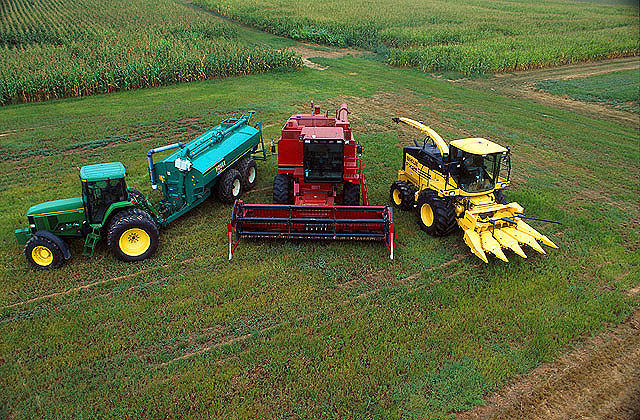What is a Farmland Development Rights Agreement?
A farmland development rights agreement (originally called a PA 116 agreement after the act that created the program) is an agreement between a landowner (typically a farmer) and the state of Michigan that can reduce taxes on the land and avoid special assessments for sanitary sewer, water, lights or non-farm drain projects.
As of 2021, there are over 3.1 million acres of farmland enrolled in PA 116, and the quantity of acreage benefitted is growing over the last five years. (Source)
How long is the agreement?
The term of the agreement is stated on its face. Agreements cannot be fewer than seven years in length when renewed or ten years initially, and they can be terminated early in some circumstances. The maximum term is 90 years, but since renewal is automatic, there is no compelling reason to do an extended term other than the risk that the program might someday be changed to something less favorable, or automatic renewal might someday be removed.

What are the enrollment qualifications?
You don’t have to be big. Except for specialty farms, at least 51% of the land needs to be in active agriculture. Farms over 40 acres have no minimum gross income requirements. Farms as small as five acres can be enrolled if they meet a $200 per tillable acre minimum gross income. Also, specialty farms of 15 acres or more are eligible if they meet a minimum gross farm income of $2,000 per year.
Is there a penalty for early termination?
Yes, and it differs depending on circumstance. In cases other than death or disability, the last seven years of benefit, plus 6% interest must be repaid. The interest payment does not apply in the case of death or disability, and there is a prorated formula used to determine the amount of the last seven years that is due.
Early termination is available in these circumstances:
- Death or disability of an Agreement holder or person essential to the farm operation. AN APPLICATION MUST BE MADE WITHIN THREE YEARS OF A DEATH!
- A parcel up to two acres* with a structure pre-dating the Agreement.
- A parcel of up to two acres* for construction of a residence for a person essential to the farm.
- The parcel can be more than two acres if that is necessary to include buildings, and if the area granted is not sufficient under local zoning, a variance must be obtained before the release.
- The farmland is economically inviable.
- Surrounding land usage restricts farming.
- Natural irreversible change occurs to the land, which restricts farming.
- A court order restricts farming.
- Public interest is served by the release.
Can the release be for just part of the land?
Yes, and in some cases it must be partial, such as for construction of a residence. Typically, the goal of the preservation program is to keep as much land preserved as possible from development and therefore, a partial release can be granted.
What happens when the agreement expires?

You have to repay the last seven years of benefit within thirty days of expiration, or a lien will be placed on the property. The lien must be repaid when the land is sold. Benefits are related to the owner’s income, so it is not uncommon to not claim benefits in some years. If, for example, no benefit was claimed for the last five years (because of income, or knowing the property would be coming out), only two years of benefit would be included in the seven years. However, be careful when buying property formerly subject to PA 116, as you may have a lien that needs to be satisfied and the amount of the lien will have to be calculated.
The landowner is responsible for recording the relinquishment at the Register of Deeds in the county where the land is located. Even though they got you into this, you need to let the world know you got out of it. The process of getting a termination can easily take two to four months, so plan ahead.
Have questions or need help on Farmland Preservation issues or termination?
Our firm has experience over several decades in working with farmers in the program, considering the program, and especially with farm families needing to leave the program. There are many reasons to come out including death, disability, development, sale, dividing the farm when some will not continue but others will, etc. Just give us a call.
What other resources do I have?
The best resource is MDARD (Michigan Department of Agriculture and Rural Development):
- (Note that all links are external — be sure to come back and visit us)
- Overview of Farmland Preservation Programs
- Partial or Full Termination of Farmland Development Rights Agreements
- How to Split, Change or Modify and Agreement without Termination
Are there other programs for Farmland Preservation?
Other programs and agreements exist to help farms remain viable, avoid taxes and/or preserve farmland and open space.
Those include: Conservation Easements (usually permanent), Local Open Space Easements (typically temporary), Designated Open Space Easements (typically temporary), and Purchase of Development Rights (Could be State–currently unfunded–or local, if available and funded).